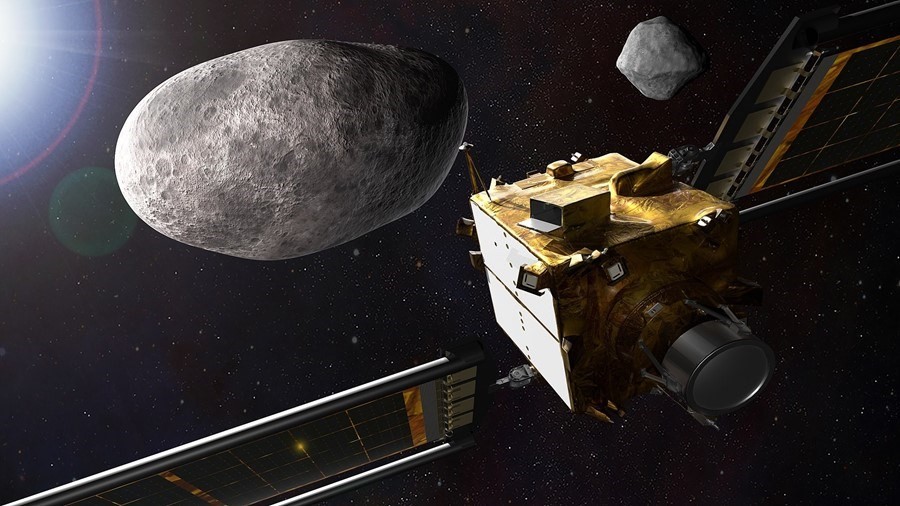The successful space mission could help save humanity from future asteroid strikes
It’s not often that a $330 million space project ends up being obliterated by an asteroid and you get to declare it a success. Last night, however, NASA engineers clapped and cheered as their DART probe smashed into a 160-metre wide space rock named Dimorphos, destroying itself in the process.
The DART (or Double Asteroid Redirection Test) spacecraft was launched on a SpaceX rocket back in November last year, and has since been on trajectory to make impact with Dimorphos, which hurtles through space millions of kilometres from Earth.
Before making contact yesterday, the spacecraft had to distinguish the asteroid from its larger twin, Didymos (which is orbited by Dimorphos) all while travelling at around 22,000 kilometres per hour. Having done that successfully, it used its onboard navigation software to adjust its course with thrusters, and finally made a head-on collision just 17 metres from the exact centre of the target asteroid.
All of this was captured on the DART probe’s onboard cameras, which beamed an image per second back to Earth up until the moment of impact. Footage released by NASA shows the approach, as well as the celebration as the probe makes impact (and yes, the comments are already awash with conspiracy theories and people hunting for extraterrestrial life).
But why are NASA out there smashing a multimillion-dollar spacecraft into an asteroid anyway? Well, it’s part of an experiment to alter the orbit of smaller celestial bodies and, ideally, prevent any asteroids from obliterating us like they did the dinosaurs. After all, news that a fresh asteroid is hurtling toward Earth seems to pop up every other week. Admittedly, no large asteroid strikes seem particularly likely in the next couple of centuries – according to the experts – but it’s better safe than sorry.
Don't want to miss a thing? Watch the final moments from the #DARTMission on its collision course with asteroid Dimporphos. pic.twitter.com/2qbVMnqQrD
— NASA (@NASA) September 26, 2022
We won’t actually know whether Dimorphos has been successfully nudged off its path for a few weeks, apparently, but NASA’s the director of planetary science, Dr Lori Glaze, seems confident.
“We’re embarking on a new era of humankind, an era in which we potentially have the capability to protect ourselves from something like a dangerous hazardous asteroid impact,” she told reporters following the mission. “What an amazing thing; we’ve never had that capability before.”
Of course, Dimorphos and Didymos were never hazardous asteroids to begin with. Experts already determined that they weren’t on course to hit Earth, and knocking them slightly off course won’t increase that risk (we hope). If an asteroid of Dimorphos’ size were to hit Earth though, it could dig a crater around one kilometre across, and the consequences in the surrounding area would be devastating. Hopefully, this DART mission will show that all we need to do to stop that happening is give the offending space rock a gentle nudge and send it on its way.
IMPACT SUCCESS! Watch from #DARTMIssion’s DRACO Camera, as the vending machine-sized spacecraft successfully collides with asteroid Dimorphos, which is the size of a football stadium and poses no threat to Earth. pic.twitter.com/7bXipPkjWD
— NASA (@NASA) September 26, 2022




